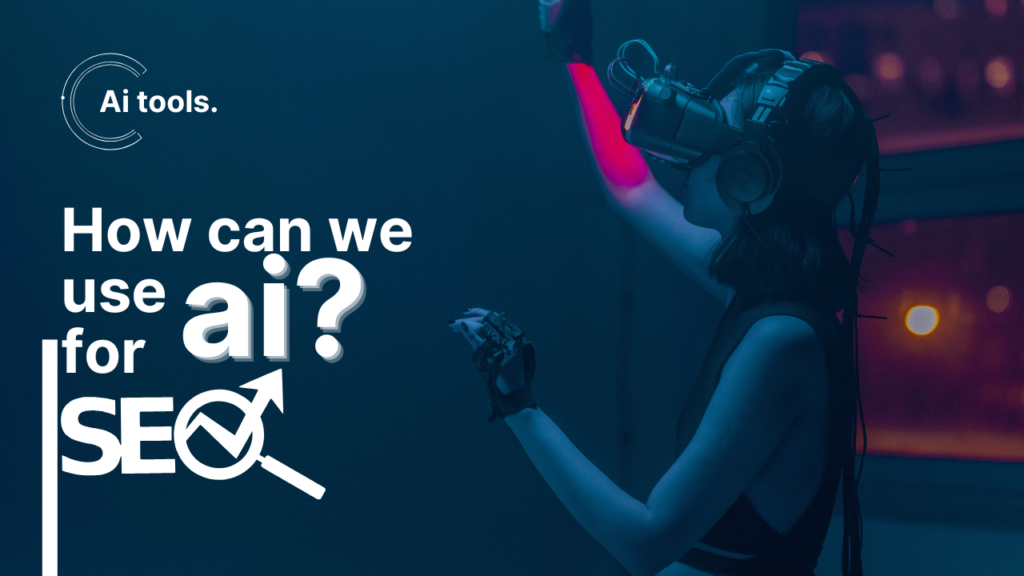Why AI Is the New Fuel for SEO

Table of Contents:
- Introduction
- The Evolution of SEO
- AI-Driven Keyword Research & Topic Discovery
- AI-Powered Content Creation & Optimization
- Personalization & User Experience
- Automation & Scaling Workflows
- Ethical Considerations & Pitfalls
- Your AI-SEO Implementation Roadmap
- Conclusion
Introduction
Search engines have moved from simple keyword matching to understanding nuance, context, and user intent. Today, artificial intelligence is the rocket fuel powering that transformation. In this article, you’ll discover how AI is reshaping every stage of SEO—from research to execution—and how you can harness its power to outperform competitors.
The Evolution of SEO
Keyword Stuffing → Semantic Search
• Early SEO focused on exact-match keywords.
• Google’s introduction of algorithms like Hummingbird and BERT shifted focus to intent and semantics.On-Page Signals → User Signals
• From meta-tags and backlinks to dwell time, scroll depth, and behavioral metrics.
Manual Audits → AI-Driven Insights
• Modern AI platforms crawl, analyze, and prescribe fixes in real time, turning audits into living dashboards.
AI-Driven Keyword Research & Topic Discovery
Semantic Clustering
AI groups related terms and concepts into clusters, revealing content gaps and untapped angles.
Predictive Trend Analysis
Machine learning models ingest search logs, news feeds, and social data to forecast rising keywords weeks or months ahead.
Competitor Gap Analysis
AI scrapes top-ranking pages, identifies missing subtopics, and suggests long-tail opportunities tailored to your niche.
Actionable Tip: Use tools like SurferSEO or MarketMuse to generate topic maps and prioritize high-impact clusters.
AI-Powered Content Creation & Optimization
Drafting at Scale
Leverage GPT-powered assistants to outline articles, write first drafts, or generate meta descriptions infused with LSI (latent semantic indexing) terms.
On-Page Recommendations
Platforms like Clearscope analyze your draft against top-ranking pages and recommend ideal word count, keyword density, and header structure.
A/B Testing Headlines & CTAs
Automatically conduct multivariate tests on titles, intro paragraphs, and call-to-action buttons—AI learns which versions boost click-through and engagement.
Best Practice: Always review and human-edit AI drafts to maintain brand voice, factual accuracy, and originality.
Personalization & User Experience
Dynamic Content Delivery
Serve customized headlines, images, or product recommendations based on user profiles—new vs. returning visitors, geography, or referral source.
Conversational Interfaces
Integrate AI chatbots to answer FAQs, guide users through decision trees, and reduce bounce rates.
Voice & Visual Search Optimization
Train AI models on your audio transcripts and image alt-text so your content surfaces in voice assistants (Siri, Alexa) and visual search (Google Lens).
Pro Tip: Deploy heat-mapping and session-recording tools with AI insights to pinpoint UI friction and optimize layout for higher conversions.
Automation & Scaling Workflows
Automated Reporting
Swap manual spreadsheets for AI dashboards that blend analytics, rank tracking, and backlink data—delivering prescriptive insights in plain English.
Backlink Prospecting & Outreach
AI identifies high-authority prospects, scores outreach likelihood, and even drafts personalized emails to maximize response rates.
Localization at Scale
Generate geo-targeted variations of content—language nuances, regional terminology, local regulations—without micromanaging each page.
Efficiency Boost: Free your team to focus on strategy and creativity, while AI handles repetitive tasks at lightning speed.
Ethical Considerations & Pitfalls
Content Homogenization
Overreliance on the same AI prompts can produce generic, cookie-cutter articles.Privacy Compliance
Personalized experiences must adhere to GDPR, CCPA, and other regulations when processing user data.Algorithmic Blind Spots
Google updates can suddenly penalize black-hat or overly optimized AI tactics—maintain fundamentals alongside innovation.
Guardrail: Keep humans in the loop. Use AI for data-driven suggestions, not final decisions.
Your AI-SEO Implementation Roadmap
Audit & Benchmark
• Run an AI-powered site audit. Capture current rankings, traffic, UX metrics.Pilot AI Tools
• Start small: apply AI to keyword clustering or meta-description A/B tests.Measure & Iterate
• Track lift in rankings, CTR, and engagement. Refine models and prompts accordingly.Scale Strategically
• Roll out successful pilots across the site and onboard your team on best practices.Continuous Learning
• Stay plugged into Google’s AI research updates, SEO conferences, and tool vendor roadmaps.
Conclusion
AI is more than a buzzword—it’s the catalyst redefining how we uncover user intent, create content, and optimize for search. By methodically integrating machine learning and NLP into your SEO workflows, you’ll produce richer content, deliver personalized experiences, and automate scaling in ways that were unthinkable a few years ago. Embrace AI thoughtfully, keep humans at the helm, and watch your organic performance soar.
Sawubona, bengifuna ukwazi intengo yakho.
Hi Georgenep, Thank you for your message. Could you please let us know which product or service you’re interested in so we can share the pricing details?